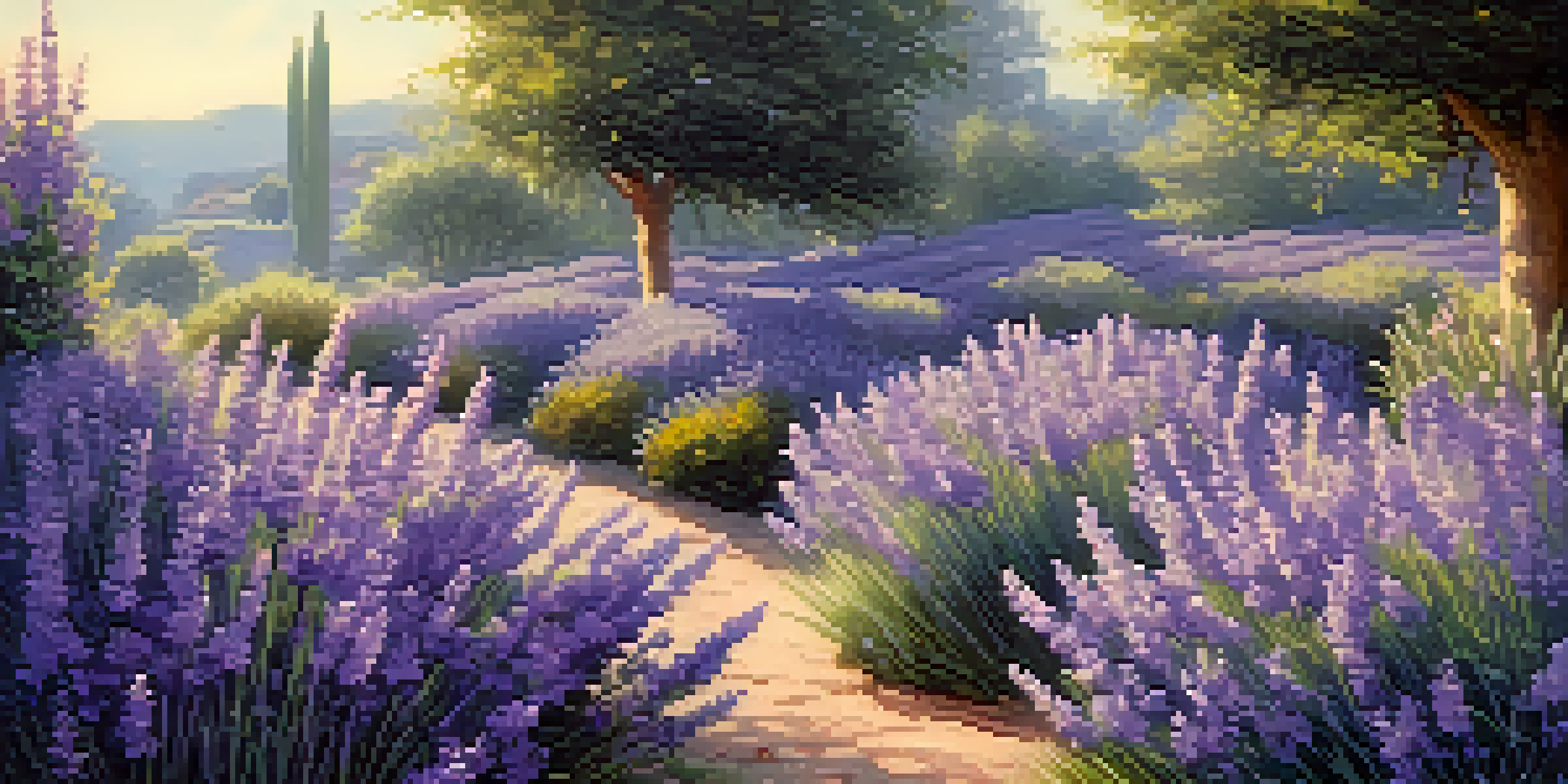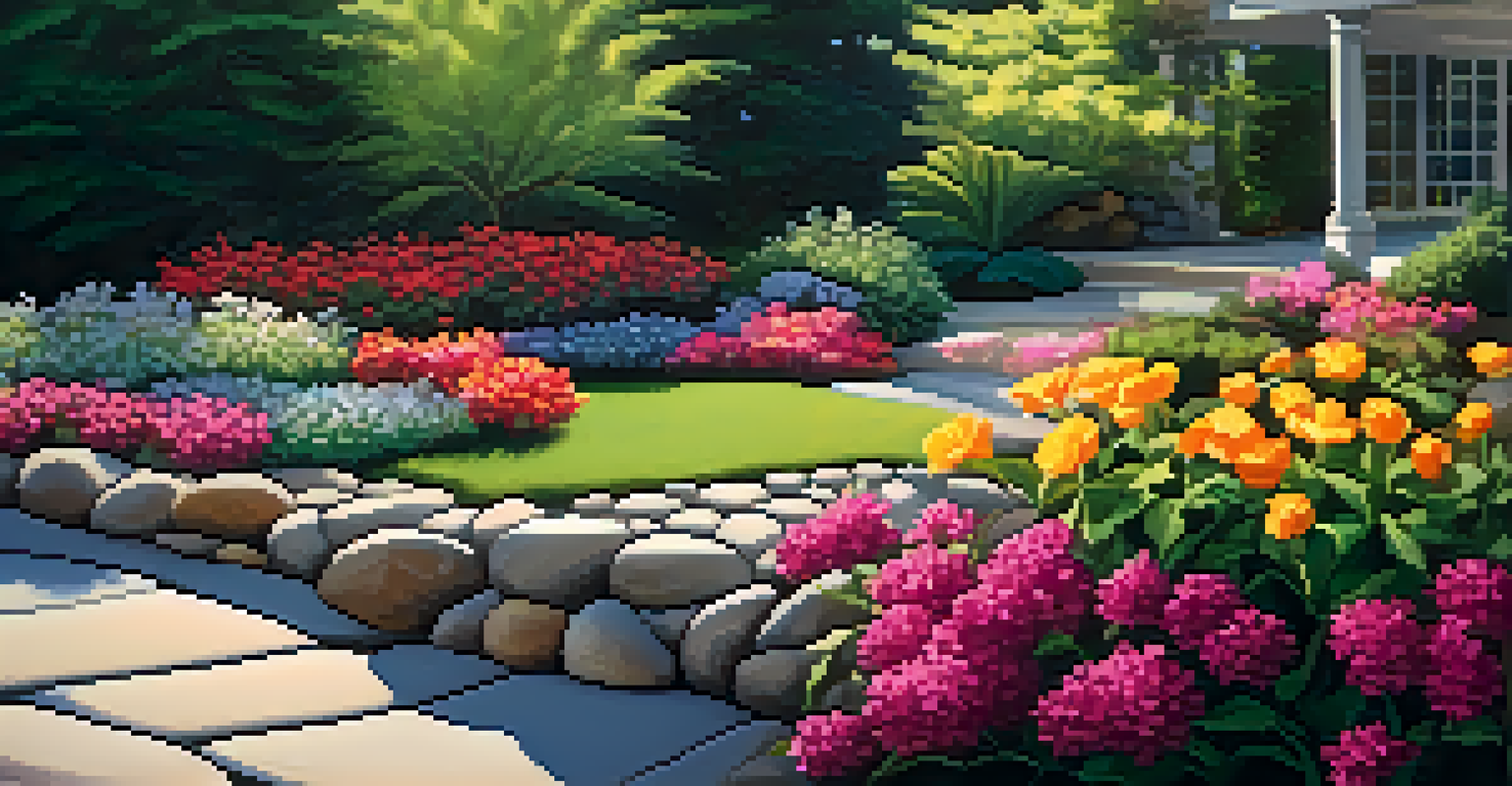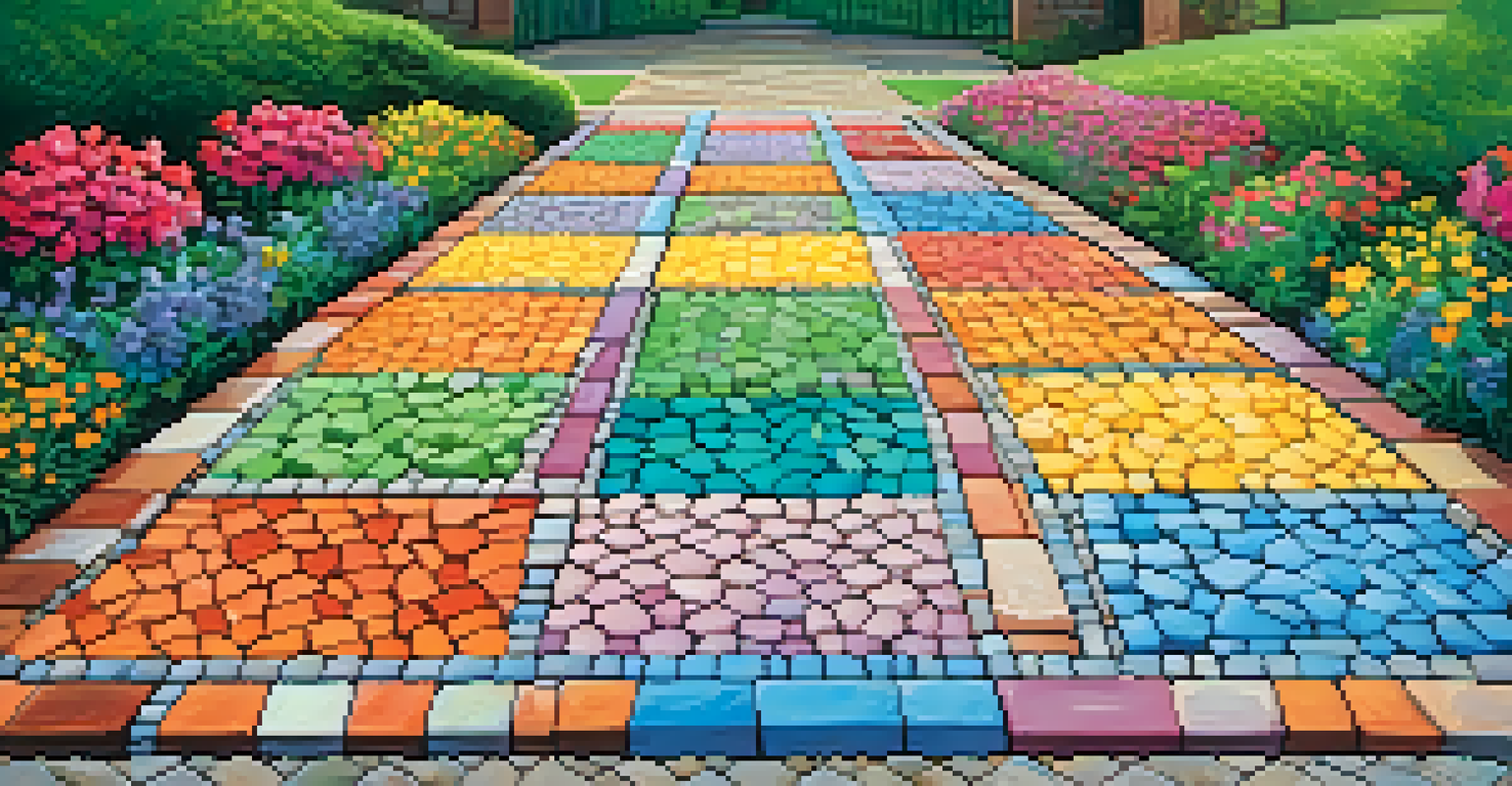Unique Edging Ideas to Define Your Garden Beds Effectively

Using Natural Stone for Rustic Elegance
Natural stone has an undeniable charm that brings a rustic elegance to your garden beds. Whether you choose large boulders or smaller pebbles, the texture and colors can enhance the overall aesthetic of your garden. Plus, stone is durable and requires minimal maintenance—perfect for busy gardeners.
The earth laughs in flowers.
Imagine a flower bed bordered by smooth river rocks, creating a gentle contrast to vibrant blooms. This natural edging not only looks appealing but also helps to keep soil in place, preventing erosion. It’s a timeless choice that complements both modern and traditional garden designs.
Additionally, you can mix different types of stones for a more eclectic look. For instance, combining flat stones with rounded pebbles can create visual interest and dimension, inviting guests to explore your garden further.
Recycled Materials for Eco-Friendly Edging
If you're looking for a budget-friendly and eco-conscious option, consider using recycled materials for your garden bed edging. Old bricks, wood scraps, or even tires can be transformed into beautiful borders. This not only saves money but also gives a new life to items that might otherwise end up in a landfill.

For example, stacking old bricks in a staggered pattern can create a charming, rustic boundary while providing excellent drainage for your plants. Similarly, wooden pallets can be disassembled and reimagined as unique edging that blends seamlessly with nature.
Natural Stone for Timeless Appeal
Natural stone adds rustic elegance and durability to garden beds, enhancing aesthetic appeal while requiring minimal maintenance.
Additionally, using recycled materials can spark creativity and individuality in your garden. Each piece tells a story, making your garden not just a space for plants, but a reflection of your personality and values.
Metal Edging for a Modern Touch
Metal edging is a fantastic way to add a sleek, modern vibe to your garden beds. Available in various finishes like aluminum, steel, or corten, metal can be shaped into clean lines that define your garden's structure beautifully. This type of edging is not only stylish but also incredibly durable, standing up to the elements.
To plant a garden is to believe in tomorrow.
Picture a garden where vibrant flowers contrast sharply against the shiny edges of metal strips. The clean lines help create a sense of order and can make even the wildest gardens appear more refined. It’s perfect for contemporary landscapes, offering a striking visual without overwhelming the natural beauty of your plants.
Moreover, metal edging can be easily installed and adjusted, allowing you to change the layout of your garden beds as needed. This flexibility is an added bonus for gardeners who love to experiment with new designs.
Wooden Edging for Natural Warmth
Wooden edging brings a warm, inviting feel to any garden bed, making it a popular choice among gardeners. Whether you opt for logs, planks, or timber, wood can create a natural look that blends beautifully with the surrounding environment. It’s also versatile—you can choose a rustic or polished finish depending on your garden's style.
Envision a garden bordered by sturdy wooden logs, providing a cozy frame for blooming flowers. This type of edging not only adds character but also serves as a barrier to keep mulch and soil contained. Plus, wood is generally easy to work with, making it a favorite for DIY projects.
Eco-Friendly Edging Options
Using recycled materials like bricks or wood not only saves costs but also promotes eco-conscious gardening by repurposing items that might otherwise go to waste.
However, it's essential to choose treated wood to ensure longevity and resistance to rot. With proper maintenance, wooden edging can last for years, contributing to the charm of your garden.
Brick Edging for Classic Appeal
Brick is a classic choice for garden bed edging that never goes out of style. Its timeless look adds a touch of sophistication and can complement various landscaping designs. Whether you choose traditional red bricks or opt for more modern, colored varieties, this material is incredibly versatile.
Imagine a neatly arranged brick border surrounding a lush flower bed, providing a strong visual anchor. The density of bricks also helps to keep soil contained, reducing the risk of erosion and keeping your garden looking tidy. Plus, it can be easily shaped to fit any garden layout, from straight lines to gentle curves.
Brick edging is also relatively low-maintenance, requiring only occasional cleaning to keep it looking fresh. With its durability and aesthetic appeal, brick is an excellent investment for any garden.
Creative Use of Pavers for Unique Borders
Pavers offer endless possibilities for garden bed edging, allowing you to unleash your creativity. Available in various shapes, sizes, and colors, you can mix and match pavers to create a truly unique border. This flexibility not only makes for an eye-catching design but also provides a robust structure for your garden beds.
Imagine stepping stones leading along a flower bed, creating a whimsical pathway that invites exploration. Pavers can be arranged in geometric patterns or random layouts, giving you the freedom to express your personal style. They can also be set flush with the ground for a more seamless look.
Creative Borders with Pavers
Pavers offer versatile design possibilities for unique garden bed borders, allowing for creative expression while providing lasting durability.
Additionally, pavers are durable and can withstand weather conditions, making them a wise choice for long-lasting garden edging. With a bit of imagination, your garden can become a vibrant showcase of paver artistry.
Using Plants as Living Edging
For a truly unique and eco-friendly approach, consider using plants as natural edging for your garden beds. Low-growing perennials, herbs, or ground cover plants can form beautiful borders while providing additional benefits such as attracting beneficial insects and improving biodiversity.
Picture vibrant lavender or creeping thyme lining your garden beds, offering not just visual appeal but delightful scents as well. This method not only defines your space but also adds layers of texture and color throughout the seasons, creating a dynamic garden that evolves.

Moreover, using plants as edging can soften the look of your garden, blending the boundaries between your planting areas and the surrounding landscape. Plus, as your plants grow and spread, they will continue to enhance the beauty and definition of your garden beds.